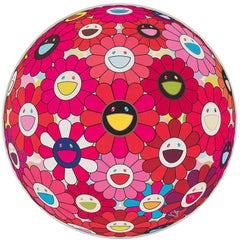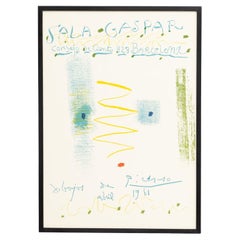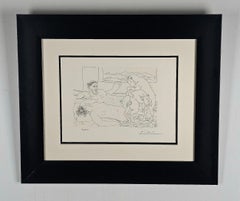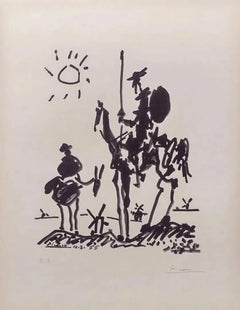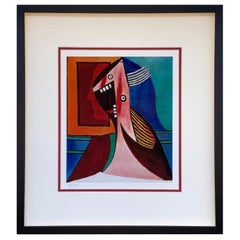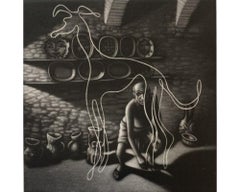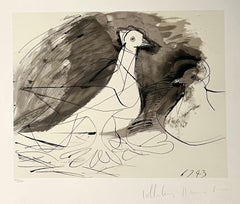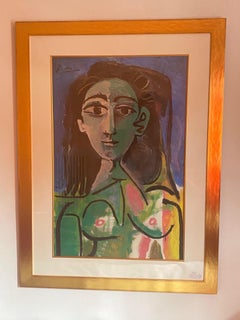Picasso Prints Limited Editions
2010s Pop Art Figurative Prints
Offset
Vintage 1960s Spanish Mid-Century Modern Prints
Paper
20th Century Prints and Multiples
Lithograph
1950s Contemporary Animal Prints
Lithograph
Mid-20th Century Prints
Paper
21st Century and Contemporary Abstract Figurative Prints
Screen
21st Century and Contemporary Abstract Figurative Prints
Screen
20th Century Modern Abstract Prints
Lithograph
1960s Cubist Figurative Prints
Color, Offset
1950s Cubist Figurative Prints
Etching
1950s Cubist Figurative Prints
Etching
1950s Cubist Figurative Prints
Etching
Late 20th Century Modern Prints and Multiples
Etching, Paper
1960s Abstract Expressionist Nude Prints
Etching, Aquatint
Mid-20th Century Abstract Expressionist Abstract Prints
Paper, Etching
20th Century Modern Animal Prints
Lithograph, Screen
2010s Contemporary Abstract Prints
Archival Pigment
1970s Pop Art Figurative Prints
Lithograph
1950s Cubist Nude Prints
Lithograph
Vintage 1970s Prints
Paper
Vintage 1980s Decorative Art
Silk, Glass, Wood
Mid-20th Century European Mid-Century Modern Prints
Paper
1930s Cubist Figurative Prints
Color
1950s Cubist Figurative Prints
Etching
1950s Cubist Figurative Prints
Etching
1950s Cubist Figurative Prints
Etching
1950s Cubist Figurative Prints
Etching
1950s Cubist Figurative Prints
Etching
1950s Cubist Figurative Prints
Etching
1950s Cubist Figurative Prints
Etching
1960s Cubist Figurative Prints
Etching
1950s Cubist Figurative Prints
Etching
1950s Cubist Figurative Prints
Etching
1950s Cubist Figurative Prints
Etching
Vintage 1960s French Mid-Century Modern Prints
Paper
1960s Cubist Figurative Prints
Etching
1950s Contemporary Animal Prints
Lithograph
1960s Abstract Expressionist Portrait Prints
Etching
1970s Nude Prints
Lithograph
1970s Surrealist Portrait Prints
Pencil, Screen
1970s Pop Art Figurative Prints
Lithograph
1970s Pop Art Figurative Prints
Lithograph
Late 20th Century Still-life Prints
Lithograph
20th Century Abstract Figurative Prints
Lithograph
Mid-20th Century Abstract Figurative Prints
Etching
20th Century Modern Abstract Prints
Lithograph
21st Century and Contemporary Contemporary Figurative Prints
Lithograph
Late 20th Century Spanish Mid-Century Modern Prints
Paper
20th Century Unknown Other Prints
20th Century Unknown Other Prints
1950s Modern Figurative Prints
Lithograph
1940s Contemporary Abstract Prints
Lithograph
1940s Contemporary Abstract Prints
Lithograph
Picasso Prints Limited Editions For Sale on 1stDibs
How Much are Picasso Prints Limited Editions?
Finding the Right Prints-works-on-paper for You
Decorating with fine art prints — whether they’re figurative prints, abstract prints or another variety — has always been a practical way of bringing a space to life as well as bringing works by an artist you love into your home.
Pursued in the 1960s and ’70s, largely by Pop artists drawn to its associations with mass production, advertising, packaging and seriality, as well as those challenging the primacy of the Abstract Expressionist brushstroke, printmaking was embraced in the 1980s by painters and conceptual artists ranging from David Salle and Elizabeth Murray to Adrian Piper and Sherrie Levine.
Printmaking is the transfer of an image from one surface to another. An artist takes a material like stone, metal, wood or wax, carves, incises, draws or otherwise marks it with an image, inks or paints it and then transfers the image to a piece of paper or other material.
Fine art prints are frequently confused with their more commercial counterparts. After all, our closest connection to the printed image is through mass-produced newspapers, magazines and books, and many people don’t realize that even though prints are editions, they start with an original image created by an artist with the intent of reproducing it in a small batch. Fine art prints are created in strictly limited editions — 20 or 30 or maybe 50 — and are always based on an image created specifically to be made into an edition.
Many people think of revered Dutch artist Rembrandt as a painter but may not know that he was a printmaker as well. His prints have been preserved in time along with the work of other celebrated printmakers such as Pablo Picasso, Salvador Dalí and Andy Warhol. These fine art prints are still highly sought after by collectors.
“It’s another tool in the artist’s toolbox, just like painting or sculpture or anything else that an artist uses in the service of mark making or expressing him- or herself,” says International Fine Print Dealers Association (IFPDA) vice president Betsy Senior, of New York’s Betsy Senior Fine Art, Inc.
Because artist’s editions tend to be more affordable and available than his or her unique works, they’re more accessible and can be a great opportunity to bring a variety of colors, textures and shapes into a space.
For tight corners, select small fine art prints as opposed to the oversized bold piece you’ll hang as a focal point in the dining area. But be careful not to choose something that is too big for your space. And feel free to lean into it if need be — not every work needs picture-hanging hooks. Leaning a larger fine art print against the wall behind a bookcase can add a stylish installation-type dynamic to your living room. (Read more about how to arrange wall art here.)
Find fine art prints for sale on 1stDibs today.
- What are limited-edition prints?1 Answer1stDibs ExpertSeptember 25, 2019
In limited editions, a fixed number of prints is produced from one plate with the understanding that no further ones will be made.
- 1stDibs ExpertFebruary 27, 2024What is a good number for limited edition prints depends on what you mean by good. If you're wondering how many prints in a series are best from a collector's standpoint, the smaller the number of prints, the more valuable the individual pieces are likely to be. In other words, the prints in a run of 30 will be rarer than a run of 100, so it is possible that the smaller run will be more valuable. If by "good" you mean which number in a particular series is best to buy, the answer is that there really isn't a better number. The print marked 1/30 and the one marked 30/30 will be identical and of equal value, assuming they are kept in similar condition. However, when a gallery sells prints in numerical order, the price may go up as the prints sell. In that case, you may pay more for print 30/30 than the buyer for 1/30 did. As the price increases, the extra amount paid could mean a lower return on investment. Shop a large collection of art prints on 1stDibs.
- 1stDibs ExpertOctober 7, 2024The difference between a lithograph and a limited edition print is the specificity of the terms. A limited edition print is any artwork that an artist produces in a limited number for sale to collectors. A lithograph is one type of print that may be made available as a limited edition. To make a lithograph, the artist draws or paints on a stone surface with an oil-based substance, such as a greasy crayon or oily wash known as a tusche. The stone is then covered with water, which is repelled by the oily areas. Oil-based ink is then applied to the wet stone, adhering only to the oily image. The stone is then covered with a sheet of paper and run through a press. Beyond lithographs, limited edition prints can be woodblock prints, engravings, screenprints, monoprints and other types of prints. Find a diverse assortment of lithographs and other prints on 1stDibs.
- 1stDibs ExpertSeptember 16, 2024Yes, many art lovers believe that limited edition prints are worth buying. Because artists produce only a certain number of limited edition pieces, prints from these series may increase in value over time. Prints are also generally an economical way to grow an art collection based on your interests. However, whether or not it’s worth investing in limited edition prints is totally subjective! At 1stDibs, we believe in buying what you love. Our shopping experience enables discovery and learning, whether you are a seasoned connoisseur or just beginning your collection. Find art prints and other art on 1stDibs.
- 1stDibs ExpertSeptember 16, 2024Yes, some limited edition art prints are worth money. Because only a certain number of prints are produced in a limited series, they often increase in value over the years. Factors like the artist, age, image quality and overall condition of the print will determine how much a particular piece is worth. To find out the value of any prints you own, enlist the help of a certified appraiser or experienced art dealer. Explore a diverse assortment of art prints on 1stDibs.
Read More
Joan Mitchell’s Rare, Late-Career Diptych Buzzes with Life
Beneath the inky blackness, the painter’s irrepressible energy electrifies this pair of intaglio prints.
The 1stDibs Guide to Types of Abstract Art
Get to know the key movements and artists who have influenced visual culture for more than a century.
Romare Bearden’s Humanity Infuses His Bright, Bold Art
Through collage, painting and printmaking, the artist foregrounded Black life in America in revolutionary new ways.
Andy Warhol and Suzie Frankfurt’s ‘Wild Raspberries’ Cookbook Is an Artful, Fanciful Delight
This set of recipes and original prints might not make you a better chef. But it will make you smile.
Art Brings the Drama in These Intriguing 1stDibs 50 Spaces
The world’s top designers explain how they display art to elicit the natural (and supernatural) energy of home interiors.
Welcome (Back) to the Wild, Wonderful World of Walasse Ting
Americans are rediscovering the globe-trotting painter and poet, who was connected to all sorts of art movements across a long and varied career.
Shapero Modern’s Director Tells Us All about 20th-Century Prints
Tabitha Philpott-Kent knows a lot of art multiples. Here, the London gallery director talks about what makes printmaking so fabulous.
Yoshitomo Nara Puts a Punk Rock Twist on the Traditional Prints of His Ancestors
The forever-rebellious Japanese artist craftily defaces famous Edo Period woodblock prints with “In the Floating World.”
